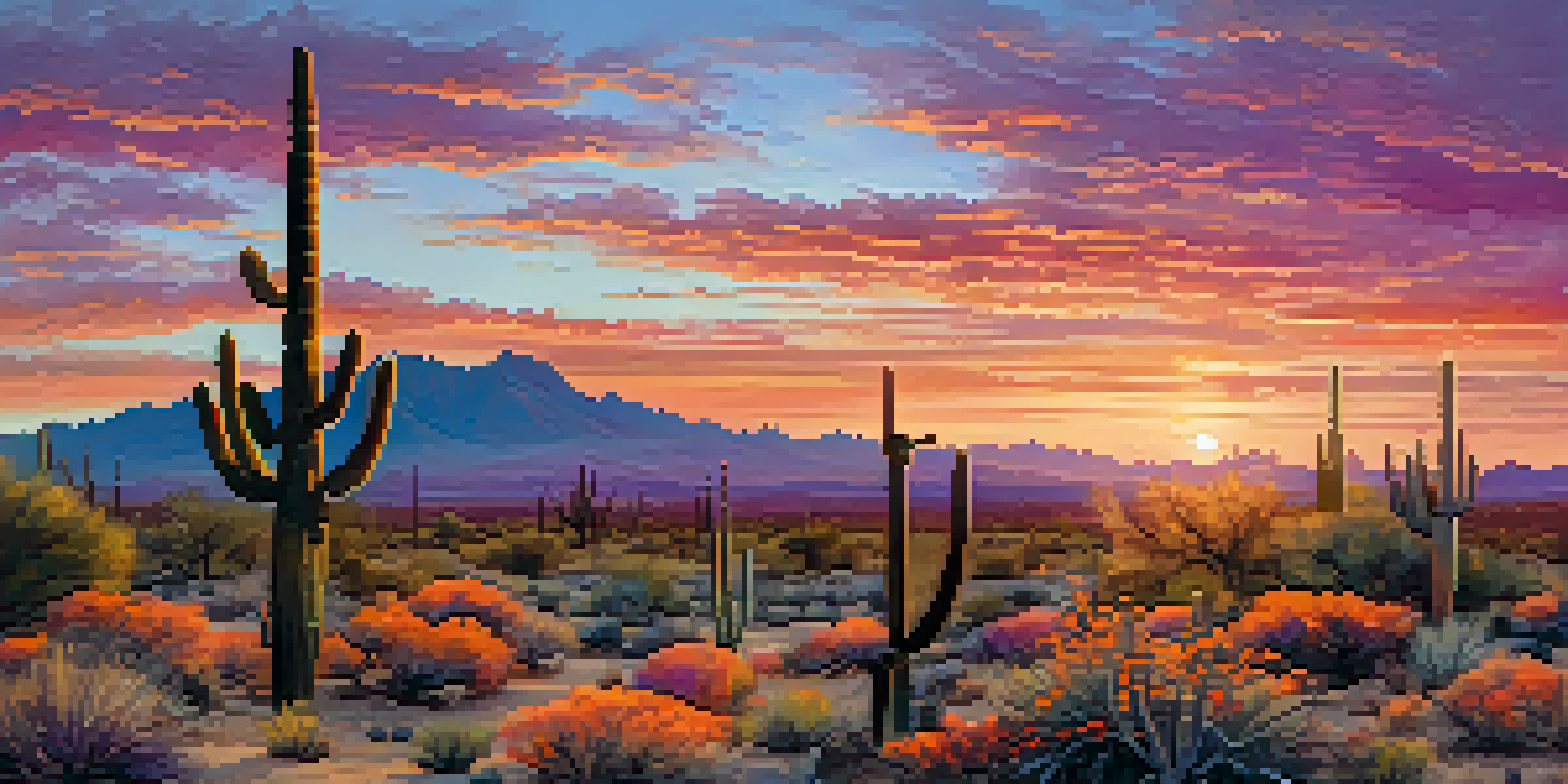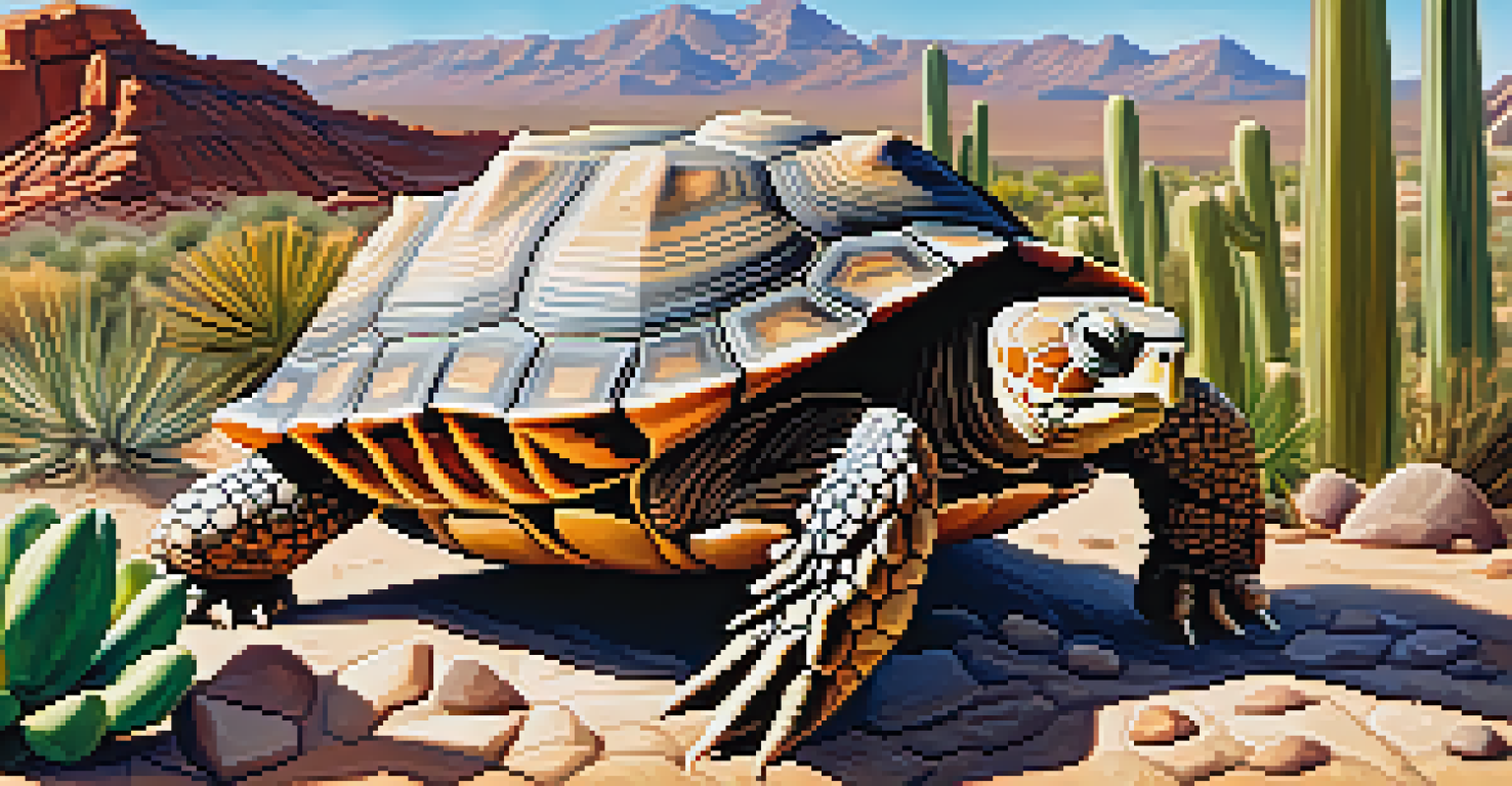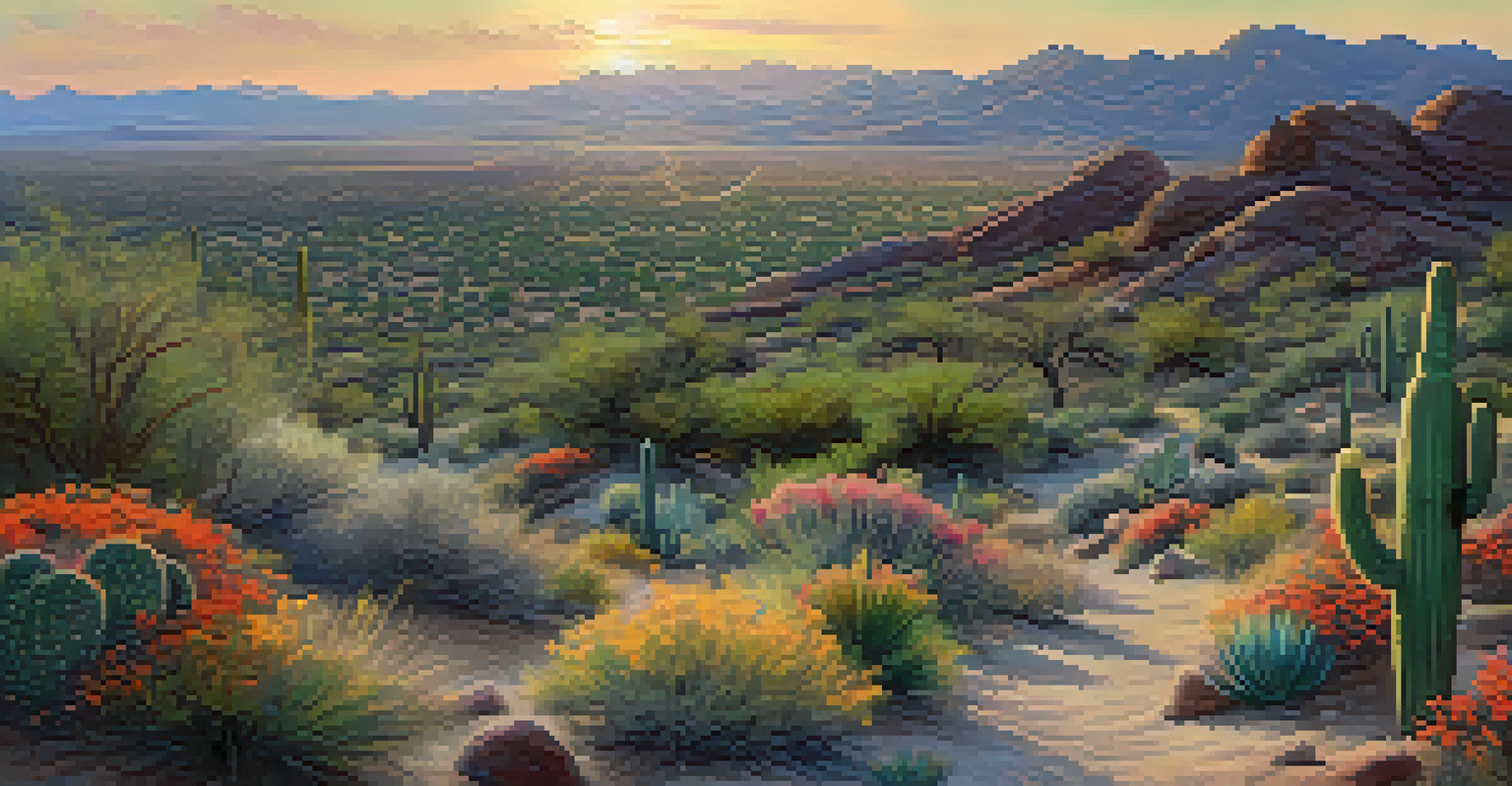Exploring the Desert Landscapes of Scottsdale Through Photography

Why Scottsdale’s Desert is a Photographer’s Paradise
Scottsdale, Arizona boasts a stunning desert landscape that attracts photographers from all over. With its unique blend of cacti, mountains, and vibrant sunsets, the area offers endless opportunities for capturing breathtaking images. The rich colors and diverse textures found in the desert make it a perfect setting for both amateur and professional photographers alike.
The camera is an instrument that teaches people how to see without a camera.
One of the most appealing aspects of photographing Scottsdale’s desert is its accessibility. You can find picturesque spots just a short drive from downtown, making it easy to explore different areas at various times of the day. Early mornings and late afternoons, known as the golden hours, provide the best lighting for capturing the beauty of the surroundings.
Moreover, the contrast of the desert landscape against the blue sky creates a striking backdrop. Whether you’re shooting wide landscapes or close-ups of desert flora, the visual appeal is undeniable. This unique environment can inspire creativity and allow photographers to tell captivating stories through their images.
Best Times to Photograph Scottsdale’s Desert
Timing is crucial when it comes to photographing Scottsdale’s desert landscapes. The best times are typically during the golden hours—shortly after sunrise and just before sunset. During these times, the soft, warm light enhances the colors of the desert, illuminating the cacti and rocks in a way that makes them truly pop.

Midday can be challenging for photographers due to harsh overhead sunlight, which casts strong shadows and can wash out colors. However, this doesn’t mean you should avoid it altogether. If you do venture out during these hours, try to find shaded areas or focus on capturing details up close, such as the textures of rocks or the intricate patterns of desert plants.
Scottsdale: A Photographer's Dream
The stunning desert landscapes of Scottsdale, Arizona, provide endless photographic opportunities with their unique colors and textures.
Seasonality also plays a role in your photography. Spring offers blooming wildflowers that can add vibrant colors to your shots, while fall provides cooler temperatures that make for comfortable shooting conditions. By planning your visit around these seasonal changes, you can capture Scottsdale at its best.
Essential Gear for Desert Photography
Having the right gear can make a significant difference in your desert photography experience. A DSLR or mirrorless camera is ideal, as they allow for greater control over settings and image quality. Additionally, a sturdy tripod can be invaluable for capturing sharp images, especially in low-light conditions during sunrise or sunset.
Photography is the story I fail to put into words.
Lenses also play an important role in desert photography. A wide-angle lens is perfect for capturing expansive landscapes, while a macro lens can help you focus on the intricate details of desert flora. Don't forget to bring a polarizing filter, which can enhance colors and reduce glare from the sun's reflection on sandy surfaces.
Lastly, consider packing extra batteries and memory cards. The dry desert climate can drain batteries faster than usual, and you wouldn't want to miss a perfect shot due to running out of space. Being prepared ensures that you can focus on capturing the stunning beauty around you.
Techniques for Capturing Stunning Desert Images
To truly capture the essence of Scottsdale’s desert landscapes, it's essential to experiment with different photography techniques. One effective method is using leading lines, such as trails or rows of cacti, to draw the viewer's eye into the frame. This technique creates depth and makes your images more engaging.
Another technique is to play with the composition using the rule of thirds. By placing key elements off-center, you create a more dynamic and interesting image. For example, positioning a prominent saguaro cactus to one side, with the expansive desert in the background, can create a balanced composition that captures attention.
Best Times for Desert Photography
Golden hours after sunrise and before sunset offer the perfect lighting conditions for capturing the desert's beauty.
Don't shy away from experimenting with long exposure photography as well. Capturing the movement of clouds or the soft waves of sand can add a sense of motion to your still images. This technique can transform a static landscape into a vibrant scene that tells a story.
Incorporating Wildlife into Your Desert Shots
Scottsdale’s desert is home to a variety of wildlife, adding another layer of interest to your photography. From the iconic roadrunner to the elusive desert tortoise, capturing these creatures in their natural habitat can enhance your portfolio. Be patient and observant; wildlife photography often requires a bit of waiting for the perfect moment.
Utilizing a telephoto lens can help you capture stunning images of wildlife without disturbing them. This type of lens allows for close-up shots while maintaining a respectful distance. Always remember to be mindful of your surroundings and the animals, as preserving their habitat is crucial.
Incorporating wildlife into your desert landscapes can create a narrative within your photographs. For instance, capturing a hawk soaring above the Sonoran Desert can evoke feelings of freedom and wild beauty. These elements can elevate your work, making it not just a landscape shot but a story of the desert ecosystem.
Post-Processing Tips for Desert Photography
After capturing your stunning desert images, it's time to enhance them through post-processing. Software like Adobe Lightroom or Photoshop can help you adjust exposure, contrast, and color balance to bring out the best in your photos. Subtle adjustments can make a significant difference in the final result.
One popular technique is to increase the vibrancy and saturation slightly, which can make the desert colors pop without looking unnatural. Be cautious, though—overdoing it can lead to unrealistic images. Aim for a balance that still reflects the authentic beauty of the desert landscape.
Essential Gear for Stunning Shots
Having the right photography gear, including a DSLR or mirrorless camera and the appropriate lenses, is crucial for capturing breathtaking desert images.
Additionally, consider cropping your images for better composition. Sometimes, a simple adjustment can transform an already beautiful photo into an exceptional one. By honing in on your subject and eliminating distractions, you can create a more focused and visually appealing image.
Sharing and Showcasing Your Desert Photography
Once you've captured and edited your desert photographs, sharing them is the next step. Social media platforms like Instagram and Facebook are great for showcasing your work and connecting with fellow photography enthusiasts. Use relevant hashtags such as #ScottsdalePhotography or #DesertLandscapes to reach a broader audience.
Consider creating an online portfolio or blog to display your work in a more curated format. This not only helps you share your photography but also allows you to tell the story behind each shot. Providing context can engage your audience and create a deeper appreciation for the art of desert photography.

Lastly, don't hesitate to participate in local photography contests or exhibitions. This can provide valuable exposure and potentially lead to networking opportunities within the photography community. Sharing your passion with others can inspire new ideas and elevate your skills.